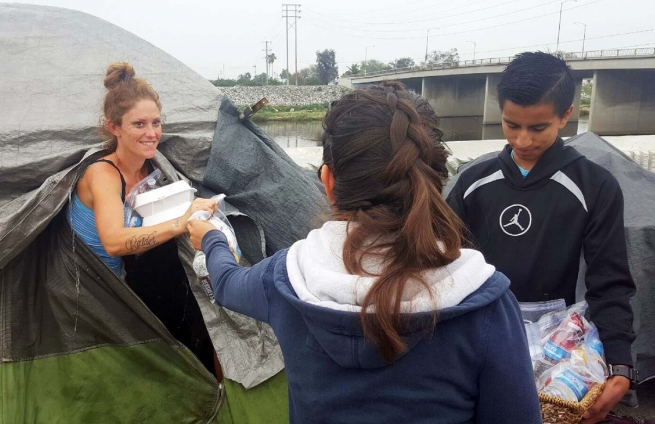HAITI: Signs of Progress Nearly Two Years After Earthquake
(MissionNewswire) Reconstruction efforts are having an impact on education, health and job creation in Haiti, reports Nigel Fisher, deputy special representative of the Secretary-General for Haiti, in a United Nations update given nearly two years after the devastating earthquake in the country.
According to Fisher, 88 percent out of the $4.6 billion in aid pledged by countries last year has already been dispersed or committed to specific programs for transport, debris removal, education, job creation, water and sanitation, public administration, health, housing, energy and other areas.
However, Fisher adds that as the two year anniversary approaches, continued aid is needed in all areas.
“Even as housing and resettlement programs accelerate, thousands of people still have basic social needs at a time when humanitarian funding is decreasing and too many partners are closing essential operations,” he says.
One of the organizations with a permanent presence in Haiti is Salesian Missions, which operates schools, homeless shelters, orphanages, feeding programs and vocational training institutes.
“Since the earthquake, Salesian Missions has made enormous efforts to rebuild their presence as a leader in vocational training in Haiti. Close to 22,000 children and youth will attend classes in the 2011-2012 school year”, says Father Mark Hyde, executive director of Salesian Missions, the U.S. arm of the Salesians of Don Bosco, who have provided education and vocational training to children, youth and adults in Haiti since 1935.
“We’re committed to staying in Haiti no matter what the need. Since the earthquake, we’ve created emergency relief and cholera-prevention programs, while expanding our primary goal of education and vocational training programs to include an additional emphasis on those skills that will help youth to rebuild their country,” says Fr. Mark, noting specific examples:
- The Oeuvre des Petites Ecoles du Père Bohnen (OPEPB or “little schools”), more than 17,000 children and youth distributed throughout 30 schools, a Vocational Training Center and a Teachers Normal School receive education and food programs. These “little schools” are located in the very poor areas of La Saline and Cite Soleil. Although the 2010 earthquake caused enormous damage, the Salesians are serving and feeding thousands of children on a daily basis. In the 2009-2010 academic year, the institution served 21,696 students.
- Pétion-Ville’s Dominique Savio Elementary School serves about 870 children from ages six to 12. Sixty teachers and more than 540 boys and girls attend the Dominique Savio College. In the Literacy Center, 150 working men and women who had never gone to school or who had dropped out, as well as boys and girls who are employed in domestic service are receiving instruction.
- In Cayes, the Salesians run the Diocesan Center for Arts and Crafts (CEDAM). Close to 140 boys are trained in carpentry, masonry, mechanics and electricity while a group of appproximately 60 girls train in cooking, sewing, embroidery and home decoration.
- In the Cap-Haitian Agricultural Technical School there are 140 students (including 25 girls), and approximately 200 others attending the Vocational Training School.
- The work in the northern capital of Haiti includes Lakou and Lakay centers to ensure shelter and education for almost 80 street children.
- In Fort-Liberté, more than 170 children (55 percent of them girls) are receiving basic educational skills. About 150 young people attend the Vocational Training Center in three sections: plumbing, carpentry and masonry. About a hundred (a third of women) study at the Teachers Normal School and approximately 160 young women attend the School of Nursing.
“Progress is being made in Haiti, and a great deal more will be made due to the enthusiasm and energy of the students who are so eager to study and to make a contribution,” says Fr. Mark, adding that in September 2011, a record 71 students graduated from the Salesian Timkatec 2 trade school in Pétion-Ville, just outside of Port au Prince. There, the students received a vocational education preparing to rebuild their country while developing the skills to be self sufficient. The majority of students trained as masons, builders, electricians and plumbers while others trained to be tailors and shoemakers.
“We are constantly looking for ways to improve job opportunities for youth,” adds Fr. Mark. “Whether it is through existing programs, helping graduates overcome obstacles to enter the workforce, or researching the needs of the marketplace.”
Salesian Missions is currently undertaking an in-depth study of the employment situation in Haiti to better understand the needs of the marketplace and determine what opportunities are available to students.
###
PHOTO: Jessica O’Connor / SALESIAN MISSIONS
SOURCES:
United Nations Press Release: Almost two years after earthquake, Haiti shows signs of progress
Rinaldi Foundation Bulletin
From Homelessness to Hope in Haiti: Salesian School Provides Trade Skills to Rebuild a Country



